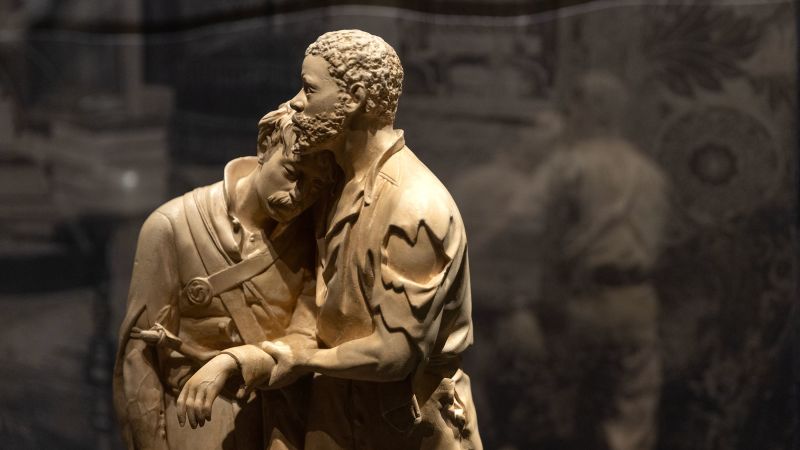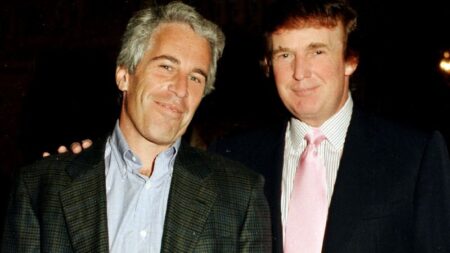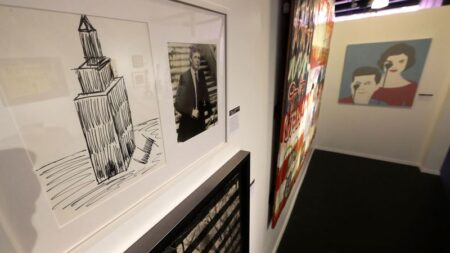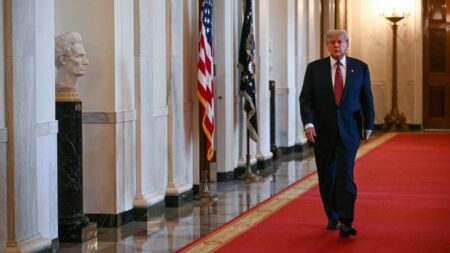The narrative surrounding American art, especially in regards to race, has recently surged to the forefront of public discourse, particularly in light of the recent exhibition at the Smithsonian. Among the most notable pieces shown is John Rogers’ 1864 sculpture, “The Wounded Scout, a Friend in the Swamp.” This evocative work represents a Black man who has liberated himself from slavery, assisting a wounded White Union soldier amidst a treacherous backdrop. Initially, the artwork was applauded for its anti-slavery and patriotic sentiments. However, as part of the 2025 exhibition titled “The Shape of Power: Stories of Race and American Sculpture,” audiences were encouraged to engage with the piece anew, questioning its implications and the historical context it reflects.
At the heart of the exhibition’s narrative lies a provocation for viewers to rethink how such artworks may have perpetuated longstanding racist paradigms despite being inspired by noble ideals of the Union and emancipation. The exhibit has emerged against a backdrop of heated political discourse, attracting backlash from political figures, most notably from former President Donald Trump, who issued an executive order criticizing the exhibition for asserting that sculpture has historically contributed to promoting “scientific racism.” The executive order emphasized that museums should be venues for education devoid of what he termed “divisive narratives.”
In a broader context, Trump’s cultural agenda has sought to glorify “shared American values” and diminish interpretations of history that evoke dissatisfaction with the nation’s past. To reinforce this agenda, Trump’s administration has placed Vice President JD Vance, a member of the Smithsonian Board of Regents, in a position to ensure that government-backed exhibitions align with this vision, a move that has placed the Smithsonian in a precarious position regarding its commitment to free expression in the arts.
As concerns about censorship loom, the Smithsonian commenced a review of its content, sparking fear that open discussions about historical injustices may be curtailed. The move has drawn critiques from various quarters. Sasa Aakil, a youthful artist who collaborated on “The Shape of Power,” expressed alarm at the potential changes impacting the institution’s exhibits and emphasized the importance of confronting the uncomfortable truths that artifacts reflect about art and race in America.
This ambitious exhibit features over 82 sculptures spanning from 1792 to 2023, each strategically arranged to evoke critical reflections on how race and racism intertwine with the medium of sculpture. From artworks like Ferdinand Pettrich’s “The Dying Tecumseh,” which distorts the tragic death of a Native American leader into a serene slumber, to Julia Kwon’s contemporary piece “Fetishization,” which critiques the objectification of Asian women, the exhibition seeks to illuminate complex narratives often lost within the annals of history.
The reception to the exhibition has been polarized. While some, like White House representative Lindsey Halligan, argue that conveying art through a lens of divisiveness undermines its broader educational and aesthetic value, others defend the necessity of interrogating artists’ roles in reinforcing oppressive ideologies. As art can reflect societal truths, an honest portrayal of those truths becomes vital for understanding the intricacies of identity, history, and ethnicity in a nuanced manner.
Compelling viewpoints characterize the ongoing debate; proponents of the exhibition assert that confrontation with historical realities, however uncomfortable, is essential for growth and understanding. Critics, however, fear such narratives might overshadow American ideals and lead to a division rather than unity among viewers. Scholars like Northwestern University’s Rebecca Zorach argue for the vital role of art in enabling individuals to grapple with complex themes in society, emphasizing that art provides tools for processing difficult histories.
With looming uncertainties about the future of exhibitions such as “The Shape of Power” and artworks that draw from painful historical contexts, there remains hope that dialogues surrounding art will continue to enrich public discourse rather than inhibit it. As the exhibition heads toward its planned opening in November 2024, the Smithsonian faces critical choices about how to navigate these contentious waters and remain faithful to its mission of portraying the nuanced portrayals of American history through art.











